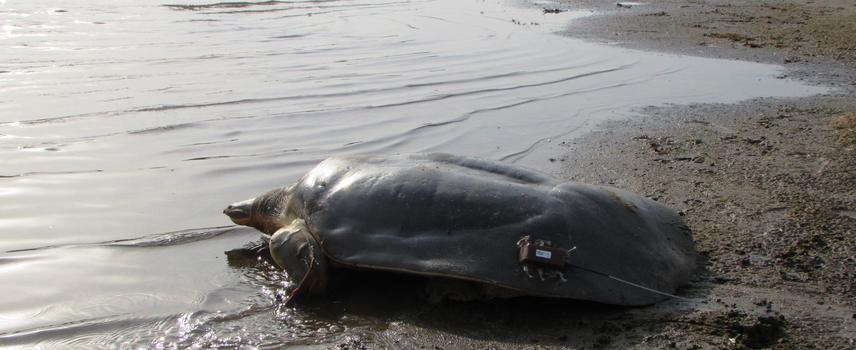Ashutosh Tripathi
This project aims to provide information on natural history of Chitra indica; to understand the spatial behaviour and movement pattern along Chambal –Yamuna River confluence. We will examine the assumption that the species is moving from the sanctuary area towards suitable nesting sites in Yamuna River. With that study will confirm the habitat utilization pattern, seasonal movement and importance of particular/different segments of river in different season (seasonal habitat use), that will provide guidelines to develop a concrete conservation action and management plan for the managers to protect this endangered species. We are doing the capacity building workshop for the frontline forest department staff and teachers, and education and awareness program for school kids and community to improve turtle conservation scenario along entire study area. In addition, through engaging fishermen for execution of the project for improve their mind set towards species conservation.

This project will provide the new information for the first time on seasonal movement patterns, and habitat preferences of this endangered species. This study will provide the reliable data on the species’ spatial behavior and the evidence for importance of particular habitats. Its main focus will be to produce scientific data, but it also has direct conservation relevance because it will help demonstrate the importance of working with local communities to alleviate the direct and indirect threats posed by human activities.
Only by knowing which areas are utilized by turtles on seasonal bases throughout the entire year, will it be possible to manage, protect, and conserve this large, riverine, endangered softshell turtle. The heterogeneity of human-related predation, primarily due to intense, local fishing within and outside the designated boundaries of the National Chambal Sanctuary (NCS) continues to pose a major threat to C. indica populations. Once these data are known, then it will be possible to target conservation efforts most effectively at the source of known threats. Although contract turtle poaching is well documented in major north Indian rivers, the dominant threat is primarily the opportunistic taking of turtles and their eggs while local communities are engaged in routine fishing activities, legally outside the protected areas and illegally within sanctuaries and reserves. In addition to the proposed study of Chitra spatial ecology, we will conduct capacity building workshops for the local forest department and teachers and education program for the local fishermen group and school kids to raise awareness. These activities will be part of our larger, overall effort to alert local and regional populations, particularly those living along the rivers, about the important role these animals, both turtles and crocodilians (mugger crocodiles and gavials) play in river ecology, their unique features, and why and how to conserve them. For the execution of this study, we will be tagging 15 breeding adults (male & female) individual of C. indica with Very High Frequency (VHF) transmitters and tracking them with the help of portable receiver and hand held Yagi antenna to assess their movement pattern and seasonal migration in the Chambal and Yamuna River near the Chambal-Yamuna Confluence.